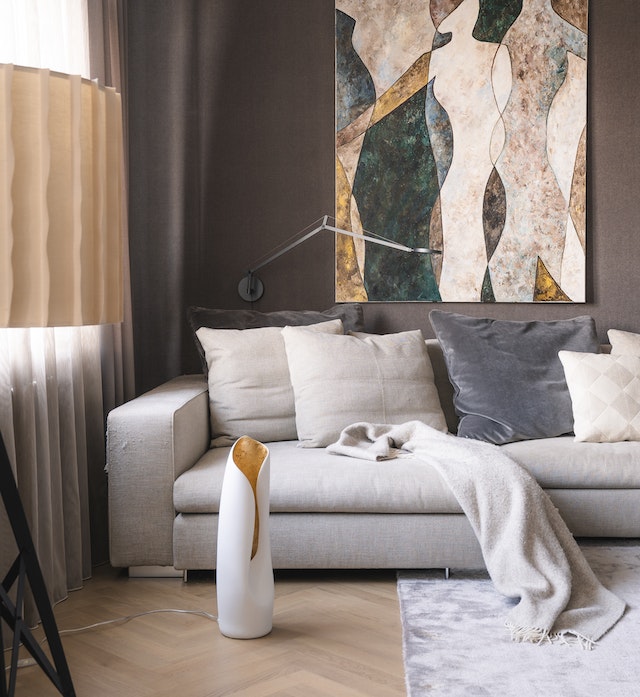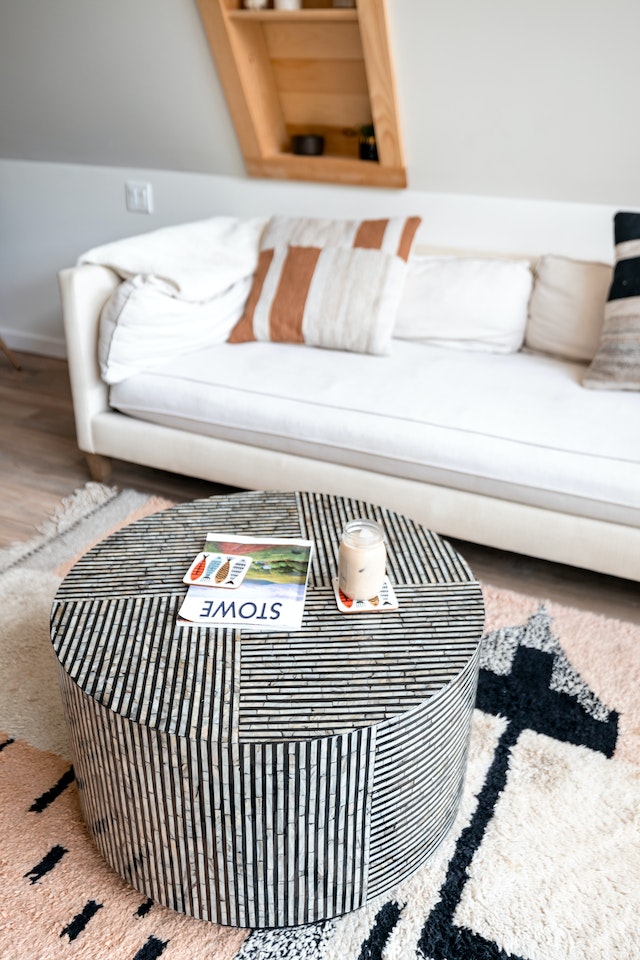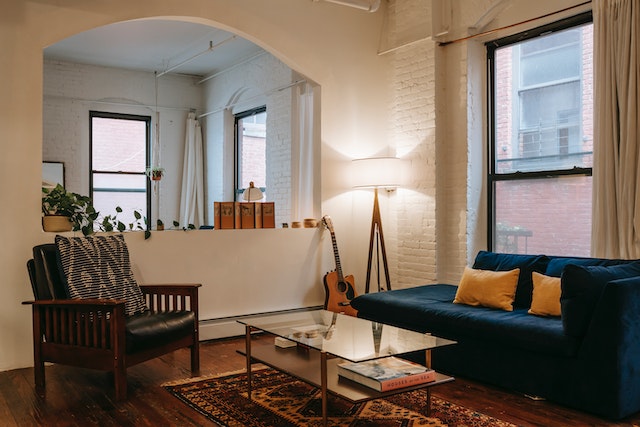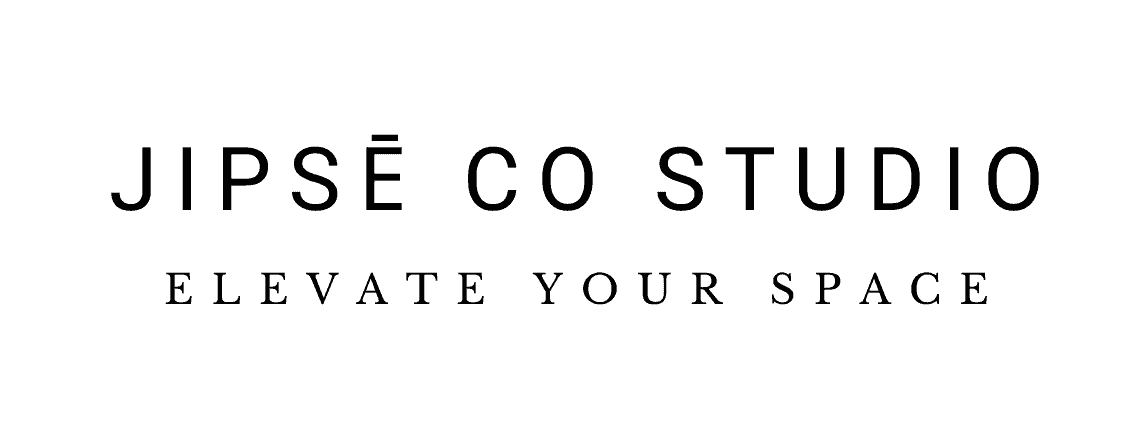In the world of interior design, texture and pattern play a crucial role in creating visually captivating spaces. By incorporating various textures and patterns, designers can add depth, dimension, and visual interest to any room. This article explores the significance of texture and pattern in interior design, highlighting their ability to transform a space and evoke specific emotions.

Design Trends in 2023
As we move towards 2023, there are several emerging design trends in texture and pattern that will dominate the world of interior design. One of the most prominent is the use of natural and organic textures, such as raw wood, stone, or jute. This trend reflects a growing desire for sustainability and a connection to nature within our homes.
Another popular trend is the incorporation of geometric patterns, both in bold and subtle ways. Geometric patterns add a modern and dynamic touch to any space and can be used in various forms, from furniture to wallpaper.
In addition to these trends, we are also seeing a resurgence of traditional patterns such as florals, damasks, and toile. These classic designs add a sense of elegance and sophistication to any room.

Furthermore, the use of mixed textures and patterns is also on the rise. Designers are combining different materials and patterns to create a layered and eclectic look that adds depth and character to a space.
Overall, in 2023 we can expect to see a diverse range of textures and patterns being used in interior design, catering to different styles and preferences. From natural elements to bold geometric shapes, the possibilities for incorporating texture and pattern are endless.
So, it’s essential for designers to stay updated on current and upcoming trends in texture and pattern to create visually stunning and impactful spaces for their clients. With a thoughtful balance of textures and patterns, designers can transform any room into a work of art that reflects the unique personality and style of the homeowner.
The future of interior design is undoubtedly exciting, and texture and pattern will continue to play a significant role in shaping it.

1. Understanding Texture in Interior Design
Texture refers to the tactile quality of surfaces within a space. It can be smooth, rough, soft, or hard, and it greatly influences the overall feel of a room. Incorporating different textures allows designers to create contrast and balance, enhancing the visual appeal of a space. For instance, pairing a plush velvet sofa with a sleek glass coffee table adds a luxurious and sophisticated touch.
2. Harnessing the Power of Patterns
Patterns are intricate designs that can be discovered in various aspects of interior design, including wallpapers, fabrics, and flooring. They bring visual allure, establish focal points, and can evoke specific moods or themes.
Patterns, whether bold and geometric or delicate and floral, possess the remarkable ability to completely alter the atmosphere of a room. While combining different patterns may initially seem like a design obstacle, with the proper strategy, it can lead to the creation of a visually captivating space in a room layout.
3. Combining Texture and Pattern
The true enchantment of interior decorating lies in the skillful fusion of design principles, thoughtful space planning, and the harmonious interplay of texture and pattern. By thoughtfully combining textures and patterns, designers can create a multi-dimensional and visually engaging space that reflects the personality of its inhabitants. For instance, pairing a shaggy rug with a bold striped wallpaper can add depth and visual interest to an otherwise plain room.
By skillfully layering different textures and patterns, designers can create a harmonious and visually dynamic space. For example, pairing a textured brick wall with a patterned area rug and a mix of textured throw pillows can add depth and visual interest to a living room.
4. Evoking Emotions through Texture and Pattern
Texture and pattern not only add aesthetic value to a space but also have the power to evoke emotions and set the mood for a room. Smooth, soft textures can create a sense of calm and comfort, while rough and rugged textures can add an element of strength and character. Similarly, certain patterns like stripes or chevron can create a sense of energy and movement.
Texture and pattern have the power to evoke specific emotions and set the tone for a room. Smooth and sleek surfaces can create a sense of modernity and sophistication, while rough textures can add a rustic or industrial feel.
Similarly, patterns can evoke a range of emotions, from calm and serene to vibrant and energetic. By understanding the psychological impact of texture and pattern, designers can strategize their space planning efforts by create spaces that resonate with the desired mood.
5.Material Selection
When selecting materials for texture and pattern in interior design, it is important to consider the overall design concept and the desired atmosphere of the space. Cohesion and balance should be maintained to ensure a visually pleasing result. Additionally, the durability, maintenance requirements, and functionality of the materials should also be taken into account to ensure they meet the practical needs of the space.
By carefully selecting materials that offer interesting textures and patterns, interior designers can add depth, visual interest, and personality to a room, creating a space that is both visually appealing and engaging to the senses.
6.Space Planning with Texture and Pattern
When planning the layout of a space, designers must consider how texture and pattern will play a role in the overall design. The strategic placement of different textures and patterns can help create focal points, add depth, and guide the flow of movement within a room. It is important to strike a balance between using too many or too few elements, as well as considering how they will interact with each other within the space.
Expert Tips and Ideas
1. Mix Textures: Combine different textures, such as smooth, rough, soft, and shiny, to add depth and variety to your space. For example, pair a plush velvet sofa with a sleek metal coffee table.
2. Layer Patterns: Layering patterns can create a visually dynamic and engaging space. Start with a larger-scale pattern, such as a bold geometric print on a rug or wallpaper, and then add smaller-scale patterns through pillows, curtains, or artwork.
3. Contrast Textures: Pair contrasting textures to create a striking visual impact. For instance, pair a rough, natural-textured wall with smooth, glossy furniture or vice versa.
4. Play with Scale: Experiment with different scales of patterns and textures. Combine large-scale patterns with smaller-scale textures to create a balanced and visually appealing composition.
5. Use Textured Materials: Incorporate materials with inherent texture, such as woven fabrics, rattan, or textured wallpapers, to add tactile interest to your space.
6. Consider Color Palette: Choose patterns and textures that complement your color palette. Harmonious color combinations can enhance the overall visual appeal and cohesiveness of the design.
7. Focus on Focal Points: Use texture and pattern strategically to draw attention to specific areas or focal points in the room. For example, a textured accent wall or a patterned backsplash can become a captivating focal point.
8. Mix and Match: Don’t be afraid to mix different patterns and textures together. Just ensure there is a common element, such as color or style, to create a cohesive look.
Remember, balance in design is key. And there is no exception when incorporating texture and pattern into your interior design. Experiment, trust your instincts, and have fun creating a visually interesting and inviting space. Texture and pattern are essential elements in interior design, allowing designers to create visually captivating spaces that evoke specific emotions. By skillfully combining different textures and patterns, designers can transform a room, adding depth, dimension, and visual interest.

1 Comment